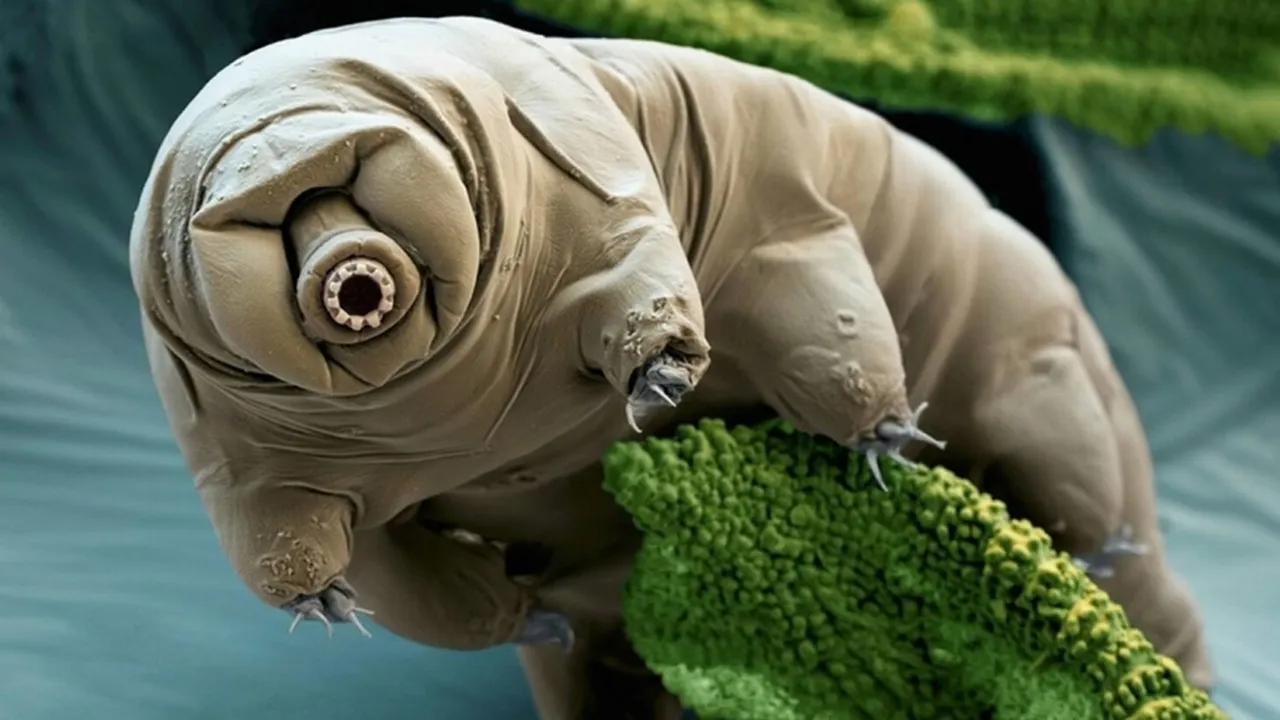"TARDIGRADOS"

Asi se llaman estas diminutas criaturas segun un estudio publicado en Scientific Reports y llevado a cabo por investigadores de la Universidad de Oxford, sobrevivirán al riesgo de extinción de todas las catástrofes astrofísicas, hasta que nuestro Sol deje de brillar, alcanzando una esperanza de supervivencia de 10.000 millones de años.
So called these tiny creatures, according to a study published in Scientific Reports and carried out by researchers of the University of Oxford, will survive the risk of extinction of all the astrophysical catastrophes, until our Sun ceases to shine, reaching a hope of survival of 10 billion years.
Estos diminutos animales son capaces de sobrevivir hasta 30 años sin alimentos ni agua, y soportar temperaturas extremas de hasta 150 grados Celsius, el mar profundo e incluso el vacío congelado del espacio. Vive en el agua puede vivir hasta 60 años, y crecer hasta un tamaño máximo de 0,5 mm. Son los animales tan duros que incluso se ha descubierto que pueden sobrevivir en el espacio exterior.
So called these tiny creatures, according to a study published in Scientific Reports and carried out by researchers of the University of Oxford, will survive the risk of extinction of all the astrophysical catastrophes, until our Sun ceases to shine, reaching the hope of survival of 10 billion years.
En septiembre de 2007 se lanzó la nave rusa FOTON-M3 de la ESA, y en ella fueron colocados un grupo de tardígrados. Se comprobó que no sólo sobrevivieron a las condiciones del espacio exterior, sino que incluso mantuvieron su capacidad reproductiva. Además, pueden soportar 100 veces más radiación que los seres humanos y vivir hasta 120 años en un estado de hibernación sin agua, y reactivarse en cuanto se les suministre.
In September of 2007 the Russian ship FOTON-M3 of the ESA was launched, and in it they were placed a group of tardígrados. It was found that they not only survived outer space conditions, but also maintained their reproductive capacity. In addition, they can withstand 100 times more radiation than humans and live up to 120 years in a state of hibernation without water, and reactivate as soon as they are supplied.
En 1973 Johann August Ephraim Goeze, l dio el nombre de "TARDIGRADA" Tardigrada que significa "DE PASO LENTO" debido a la lentitud de este animal.
In 1973 Johann August Ephraim Goeze, gave the name of "TARDIGRADA" Tardigrada that means "DE PASO SLOW" due to the slowness of this animal.

Se consideraron tres eventos potenciales como parte de su investigación para establecer su capacidad de supervivencia a eventos catastróficos estrellas en explosión en forma de supernovas, rayos gamma grandes e impactos de asteroides.
El ADN de estos pequeños organismos (concretamente, la especie Hypsibius dujardini) se logró secuenciar en noviembre del pasado 2015 observando una gran cantidad de material genético ajeno, concretamente un 17,5% que proviene de otras especies. El hallazgo vino de la mano de Bob Goldstein y el resto del equipo en la Universidad de Chapell Hill de Carolina del Norte (Estados Unidos). El siguiente paso es averiguar si este ADN ajeno (adquirido de bacterias, hongos o microbios) es el secreto de su extraordinaria resistencia.
Three potential events were considered as part of their research to establish their ability to survive catastrophic events in exploding stars in the form of supernovae, large gamma rays and asteroid impacts.
The DNA of these small organisms (specifically, the species Hypsibius dujardini) was sequenced in November of last 2015 observing a large amount of foreign genetic material, specifically a 17.5% that comes from other species. The find came from Bob Goldstein and the rest of the team at Chapell Hill University in North Carolina. The next step is to find out if this foreign DNA (acquired from bacteria, fungi or microbes) is the secret of its extraordinary resistance.
AMIGOS DE STEEMIT ESPERO LES GUSTE ESTE POST ESPERO COMENTARIOS @aldealdana
STEEMIT FRIENDS I HOPE YOU LIKE THIS POST I EXPECT COMMENTS @aldealdana